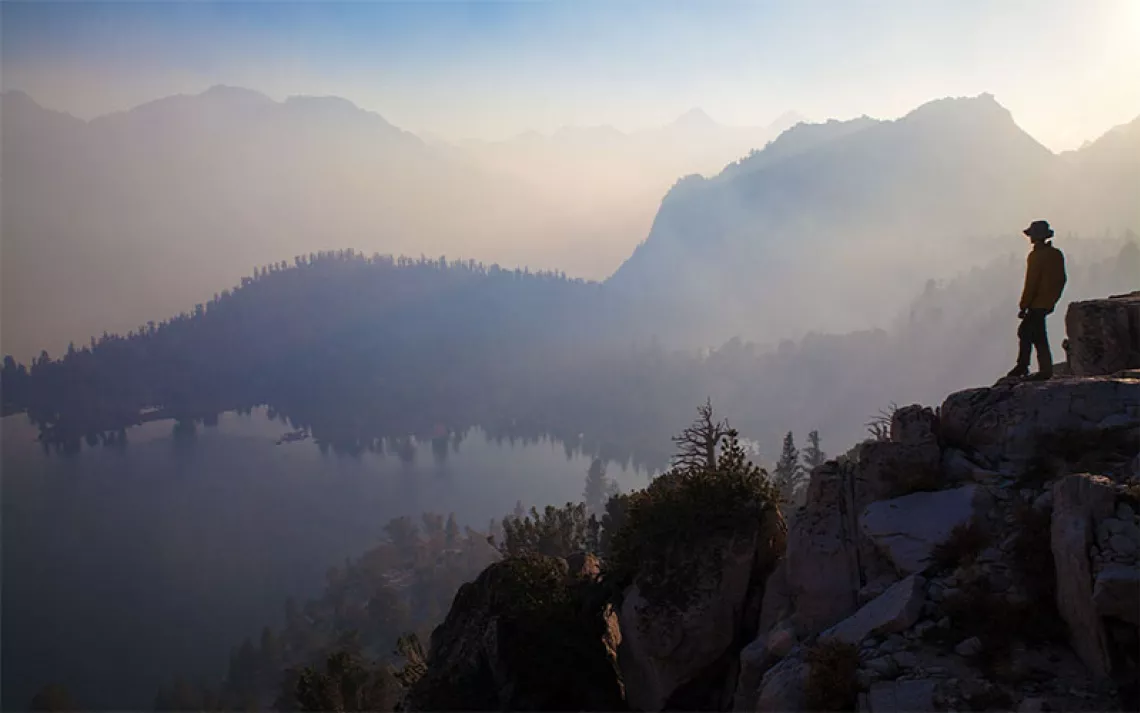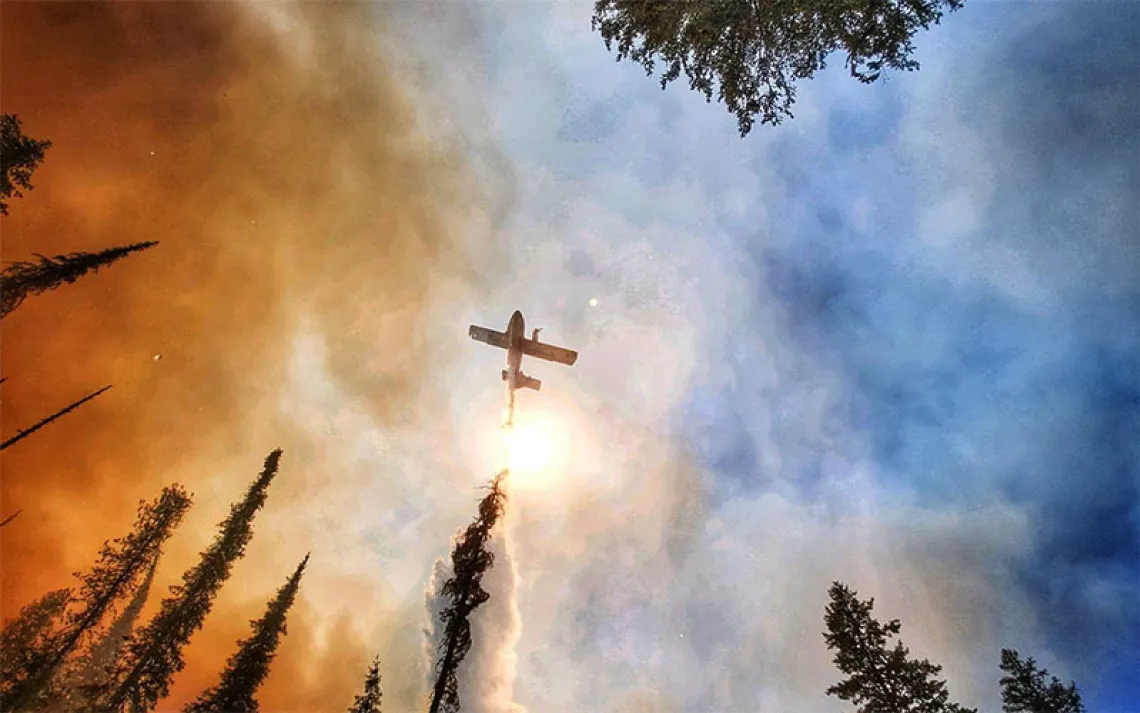Wild & Free
Check out 10 Canadian national parks offering complimentary admission in 2017

Photo by brytta/iStock
This is the year to visit Canada’s protected wildlands—and not just because U.S. Republicans in the age of Trump seem hell-bent on making it easier to sell off America’s federal land. Our neighbor to the north, the second largest country by land, is made up of 13 wild and scenic provinces. Canada is now commemorating 150 years since its 1867 Confederation, when various colonies were united as one nation.
Canada’s gift to travelers around the world? In 2017, Parks Canada is offering free admission to all the locations it protects. Whether you’ve dreamed of visiting Prince Edward Island’s red sandy beaches, the waterfalls of Quebec, Alberta’s Rocky Mountains, or the wild polar bears of Manitoba, 2017 is the year to pack your bags and pick your park. Order your free pass for Candian national parks entry, and check out this list of 10 of the Great White North’s most breathtaking parks.

Photo courtesy of Parks Canada/Ben Morin
1. Jasper National Park, Alberta
Adventurers of all ages will love exploring Jasper’s Canadian Rockies and expansive wilderness. This relaxed mountain setting boasts forests and lakes, set against the backdrop of magnificent glaciers and peaks. Its wild denizens include moose, elk, beavers, coyotes, and bears, as well as dozens of fish species, several reptiles, and hundreds of types of birds. Visitors are welcome to hike winding paths, bike along trails, paddle through crystal-clear water, and sleep under the stars.

Photo courtesy of Parks Canada/Tim Forbes
2. Thousand Islands National Park, Ontario
Located in the heart of Canada’s Thousand Islands, this seemingly infinite park consists of more than 20 islands and 90 islets. Here, park rangers believe in promoting sustainable recreation and safeguarding the land—they take extra measures to protect at-risk inhabitants such as turtles, falcons, fish, and the (harmless) grey rattlesnake. The park’s history dates back to 1904, when it was first established. These days, visitors come to camp on its many islands, to canoe and kayak along the St. Lawrence River, to bike and to hike, and even, during warmer months, to scuba dive.

Photo courtesy of Parks Canada/Dale Wilson
3. Prince Edward Island National Park, Prince Edward Island
Canada’s smallest province is famous for red sandy beaches, stunning stone cliffs, dunes, and fresh sea air. You can picnic, bike, or hike the coastal terrain, where famous lighthouses dot the horizon. Choose from seven supervised beaches within the park, such as Cavendish and Brackley, where the whole family can swim and build sandcastles. Or, simply watch the sun set over the Gulf of St. Lawrence near Cavendish, where you may well spot an endangered (and lively) piping plover singing a tune in the distance.

Photo courtesy of Parks Canada/Jacques Pleau
4. Fundy National Park, New Brunswick
At least once in their lifetime, everyone should experience the world’s highest tides. At Fundy National Park, visitors can literally walk on the ocean floor and explore the rich mud flats of this laid-back maritime province. It’s a great place to camp during warmer months—cozy up in an authentic yurt or in an oTENTik. (A cross between a rustic cabin and a tent, each features a raised floor and comes complete with beds and furniture.) Following peaceful slumber, visitors can wake among the trees to explore trails and waterfalls in the Acadian forests, or to leisurely kayak along the shoreline and view sea cliffs in the distance.
Photo courtesy of Parks Canada/Amy Krause
5. Yoho National Park, British Columbia
Located on the western slopes of the Rocky Mountains, Yoho was named after a Cree First Nations phrase meaning “awe” and “wonder.” There is plenty to inspire awe here, thanks to tall trees, cliffs, waterfalls, and surrounding vertical rock walls. With more than 400 kilometers of trails—including a guided, all-day hike to the Burgess Shale Fossil Beds, where visitors can learn about significant fossils from millions of years ago—Yoho is known as a hikers’ paradise. Many spy wild elk, moose, coyotes, and wolves while trekking the glorious mountains of these western slopes, and during winter, it’s a popular spot to ice-climb waterfalls.

Photo courtesy of Parks Canada/Stéphane Daoust
6. La Mauricie National Park, Quebec
The waterfalls of La Mauricie are spectacular in all seasons. During warmer months, visitors can take a refreshing dip in the pure freshwater of the natural pools at cascades’ foot. The park actively works to protect parts of the Canadian Shield and the St. Lawrence River, and visitors flock to hike its thick forests of conifers and hardwoods, and to canoe through its multiple lakes. Listen carefully, and you may hear the song of the common loon bird, or spot some among the 200 bird species that inhabit the park. Come nightfall, owls will be hooting in the distance.

Photo courtesy of Parks Canada/Chris Reardon
7. Cape Breton Highlands National Park, Nova Scotia
Cape Breton Highlands is home to the famous Cabot Trail coastline running through the park—a road trip not to be missed, thanks to picture-perfect views of mountains meeting sea and rivers running through canyons. Sunset hikes are popular here—trekkers are known to spot bald eagles and moose. Nova Scotia’s park is also known for whale-watching. Check out the MacKenzie Mountain Look-off, which boasts a view of the whale-traversed Gulf of St. Lawrence.

Photo courtesy of Parks Canada/Kevin Hogarth
8. Grasslands National Park, Saskatchewan
If you’ve ever dreamed of watching mighty buffalo roam freely, this is the park for you. The prairie province of Saskatchewan is home to one of the last remaining natural grasslands in North America. Grasslands is chock-full of biodiversity, history, and culture—sift through dinosaur fossils embedded among ancient sedimentary rock, and learn all about First Nations life and culture. Come nightfall, this park offers a world-class astronomy experience, thanks to Grasslands' Dark Sky Preserve—one of the largest and darkest in Canada. This program makes a special commitment to preserve the night sky by reducing light pollution, granting visitors a unique chance to see constellations.

Photo courtesy of Parks Canada
9. Wapusk National Park, Manitoba
Two words: polar bears. These adorable (and woefully endangered) creatures live in the wilderness in the subarctic and call Wapusk National Park home. Here, they’re protected, thanks to one of the world’s largest polar bear maternity denning areas. Park-goers may also spot arctic foxes, wolves, caribou, or some of the hundreds of bird species. And despite the fact that the soil is permanently frozen, several plant species thrive. The park features unique canoe excursions and, because there are no roads, you can navigate the frozen tidal flats of Hudson Bay via tundra buggy tours.

Photo courtesy of Parks Canada
10. Torngat Mountains National Park, Newfoundland and Labrador
Newfoundland and Labrador are located on the eastern edge of North America and boast a vast and remote landscape, where indigenous peoples have for thousands of years lived among their spectacular mountains. The word Torngat comes from the Inuktitut word Torngait, meaning “place of spirits.” This park provides a wonderful opportunity to learn about Inuit culture, and to explore the still-primitive wilderness. All visitors, including those on guided tours, must register before entering the Torngat Mountains. Travel itineraries are available—some with Inuit guides—and most visitors lodge at the Torngat Mountains Base Camp. For a bird’s-eye view of this quintessentially Canadian national park, there’s also a unique opportunity to go sightseeing via helicopter.
Craving a Canadian outdoor adventure yet? Several Sierra Club Outings trips can make that happen.
 The Magazine of The Sierra Club
The Magazine of The Sierra Club



